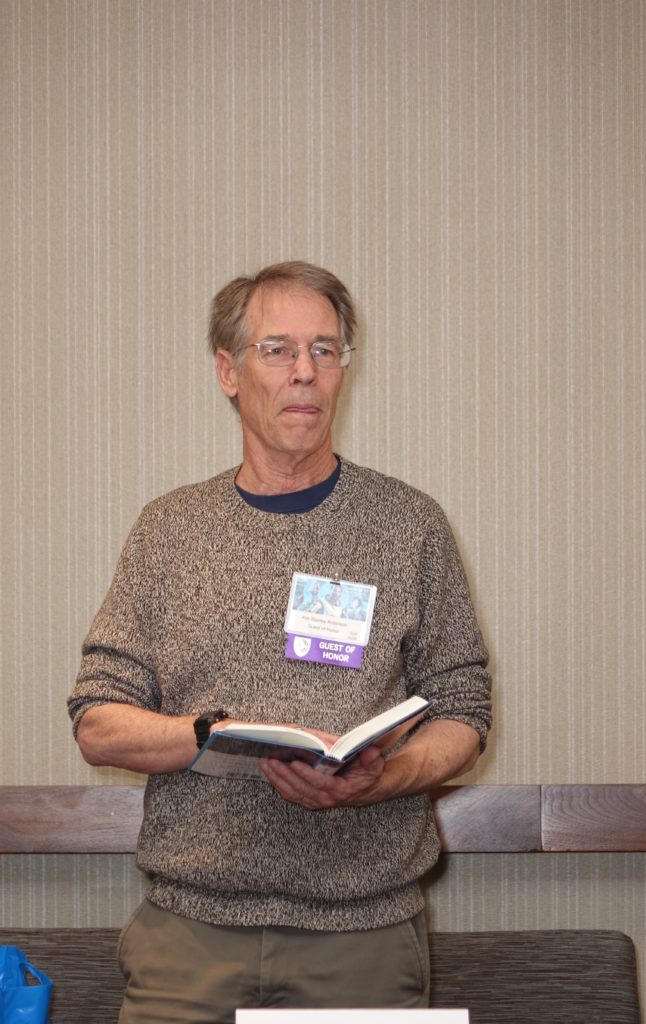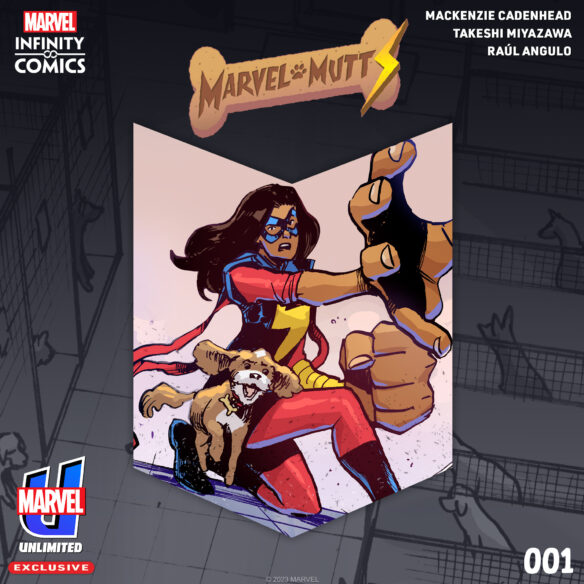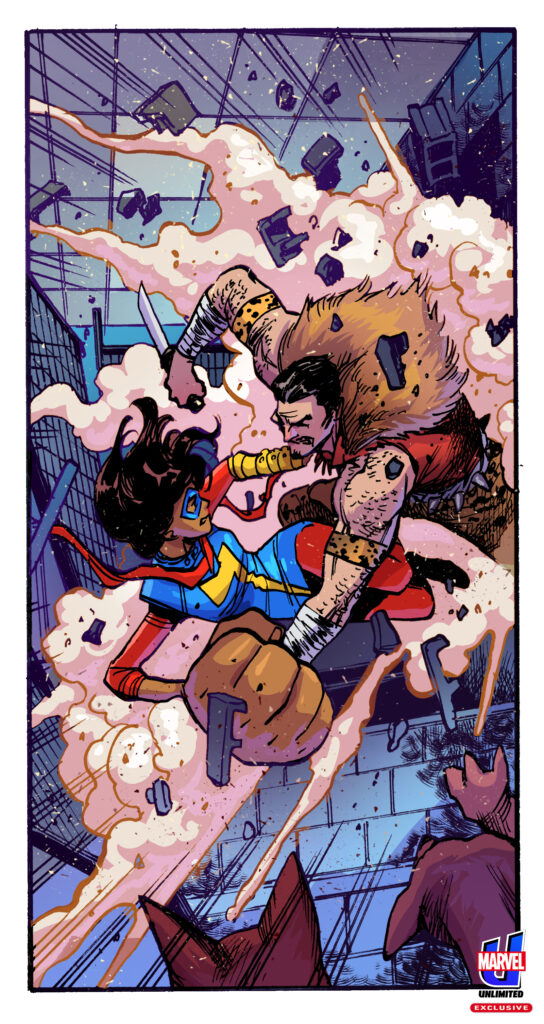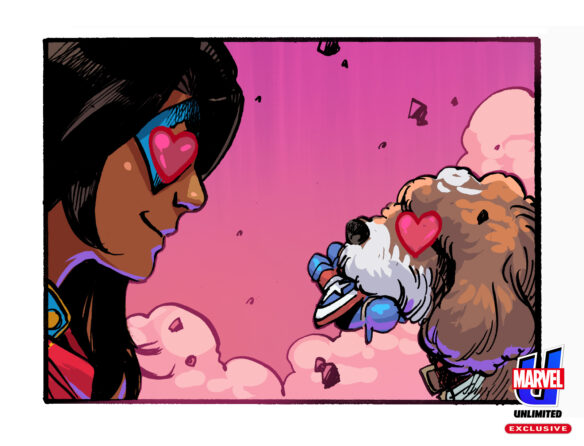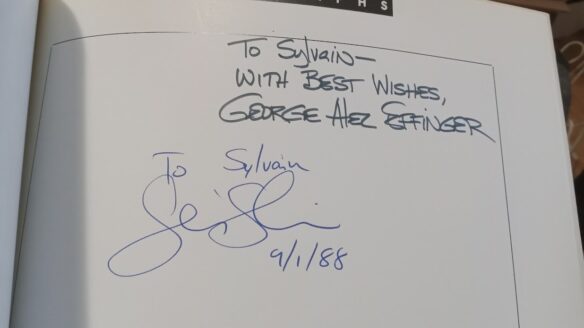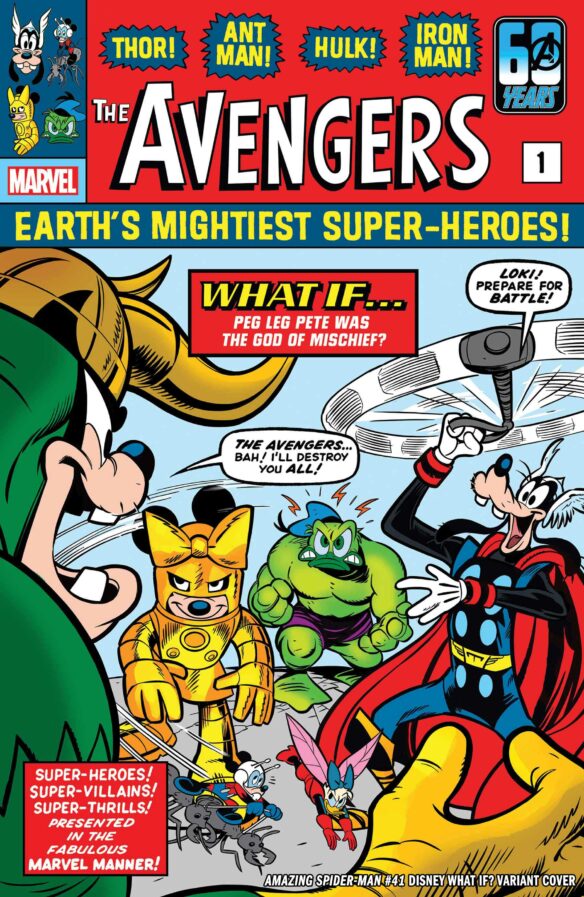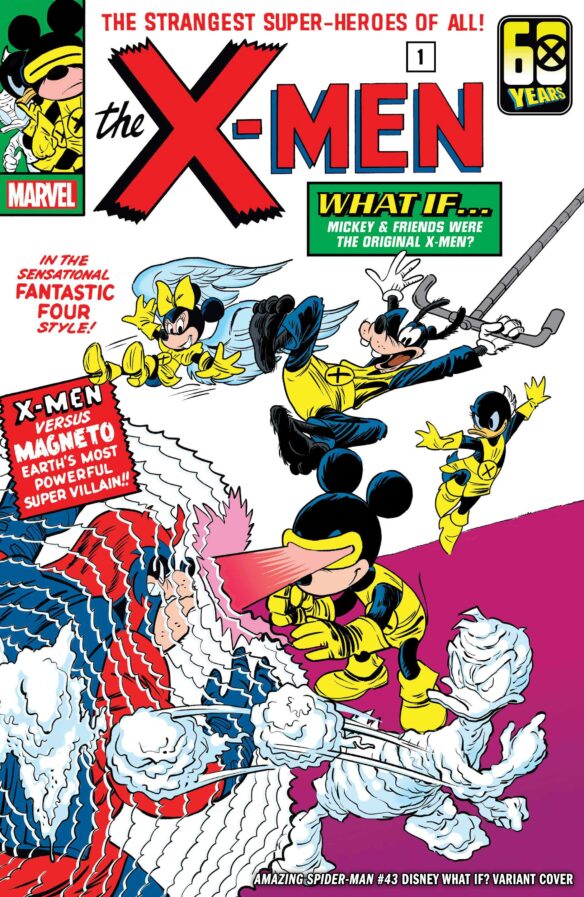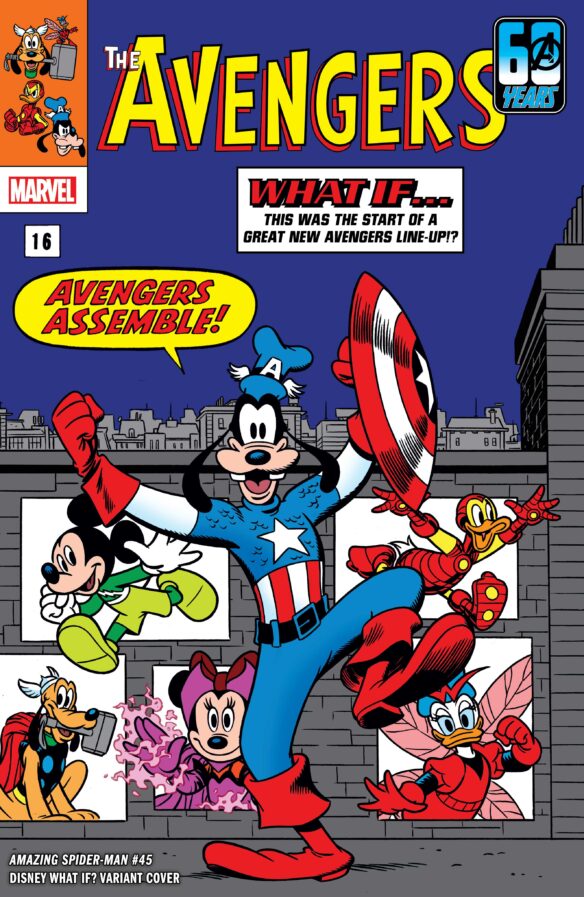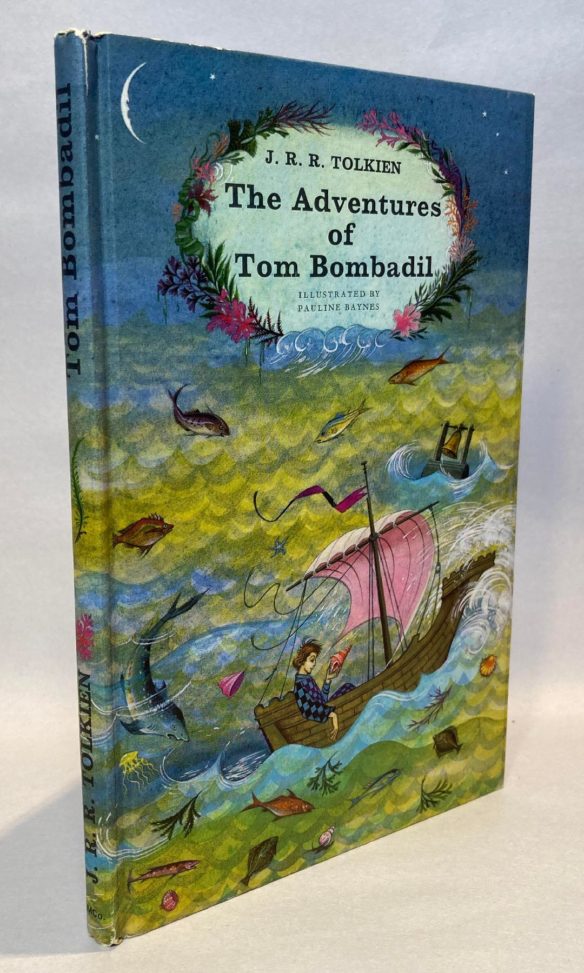(1) READY FOR WHO CHRISTMAS? Bleeding Cool is on hand when “Doctor Who Christmas Special: ‘Joy to the World’ Gets New Trailer”.
… Earlier today, we took a look at what #WhoSpy had to share on the long-running show’s Instagram “subwave network” about the upcoming special. Now, we’re getting a new look that should definitely help you piece together your speculation puzzle – a shorter second official trailer!…
(2) DISNEY BAILS ON TRANS STORY LINE. “’Win Or Lose’ Transgender Actress Speaks Out After Disney Cuts Back Role” – Deadline has the story.
In 2020, Chanel Stewart was scrolling through X when she happened upon a post about how Pixar was looking for an authentic, 14-year-old transgender girl to voice a transgender teenager in a new animated series.
Stewart, who at 14 had already logged a few commercials, knew instantly that it was her role of a lifetime.
“I was exactly what they wanted to a T, and that’s why it felt so right. It felt just so right,” says Stewart, who is a transgender girl from Los Angeles. “I immediately asked my mom if I could do it, because I just felt like if I don’t do this, it wouldn’t make sense. You know what I mean?”
Stewart eventually scored the voiceover job in Win or Lose, which revolves around a co-ed softball team at a middle school named the Pickles in the week leading up to their big championship game. Stewart couldn’t wait to share the news with her friends.
“Oh my God, it was crazy,” the now 18-year-old recalls. “I wore it as a badge. I wore it with pride. I wore it with honor because it meant so much to me. The thought of authentically portraying a transgender teenage girl made me really happy. I wanted to make this for transgender kids like me.”
So when Disney called Monday night to tell her mom, Keisha, that Win or Lose would no longer include a transgender storyline, both she and Chanel were heartsick. (Disney released a statement that said “when it comes to animated content for a younger audience, we recognize that many parents would prefer to discuss certain subjects with their children on their own terms and timeline.”)…
… By cutting the transgender storyline, Disney eliminated “a few lines of dialogue” from an episode that references a character’s gender identity. Stewart was not at liberty to share details with Deadline about her character, but was told by Disney that she’s “still a part of the show heavily.”
“It’s just that my character would now be a cis girl, a straight cis girl,” says Chanel Stewart, who is repped by KEY Talent Management and Innovative Artists. “So yeah, that’s all they really told me and that I was still a part of the show.”
But there’s one thing that Disney can’t take away from Stewart. “I’m definitely one of the first [transgender girls] to do this!” says Stewart of her voiceover gig. “It’s a true honor to be a part of queer history.”…
(3) TUNES OF MIDDLE-EARTH. [Item by Steven French.] Thijs Porck is a medievalist and Tolkien scholar at the University of Leiden and in a recent blog post he offers an interesting and detailed analysis of the songs in the anime film, War of the Rohirrim: “The Medieval in Middle-earth: Old English Songs in LOTR: The War of the Rohirrim (2024)”.
“Where is the horse? Where is the rider?”, the opening lyrics of “Hama’s Song” in The War of the Rohirrim (2024) will remind many a Tolkien fan of “The Lament of the Rohirrim” which Aragorn recites in the chapter “The King of the Golden Hall” in The Lord of the Rings: The Two Towers. In Aragorn’s poem, the opening lines run as follows: “Where now the horse and the rider? Where is the horn that was blowing?”. Tolkien, a Professor of Anglo-Saxon (Old English) at the Universities of Leeds and Oxford, based Aragorn’s poem on the Old English elegy The Wanderer, which uses the so-called ubi sunt motif (‘where are they now?’) to express the fleeting nature of worldly pleasures (the answer to the rhetorical questions being “they are no more”). As it turns out, “Hama’s Song” of the new movie is closer to the Old English original poem, which has the line: “hwær cwom mearg, hwær cwom mago” [Where is the horse? Where is the man?].’
The context of “Hama’s Song” makes clear that “the rider” referred to is the movie’s heroine Héra, who is also the subject of the movie’s credits song by Paris Paloma called “The Rider”. If you listen carefully to this song, you will notice that there is a very clear Old English lyric at 0:41 (and again at 2:01 and 3:01): “Heo is se wind, heo is se wind” [she is the wind, she is the wind]…
(4) UNHOLY ICON. [Item by Steven French.] Atlas Obscura delved into the essence of Krampus (in Milwaukee!): “Krampus Is the Christmas Icon We Need—And Maybe the One We Deserve”.
It’s the Fifth Annual Milwaukee Krampusnacht, an event that has taken over the city’s historic Brewery District. Milwaukee is a city with deep German roots, and this neighborhood, centered around the atmospheric 19th-century Pabst Brewery, with narrow streets and castellated facades, is particularly evocative of the Old World. It’s a fitting backdrop for the horde of Krampusse emerging from the shadows to mete out punishment to the naughty. Evolved from Central Europe’s pagan past and reimagined by Church elites as a kind of unholy enforcer, Krampus is now a global icon for the digital age. But what explains the ascent from obscure Alpine tradition to a 21st-century celebrity that has inspired Krampusnachten around the world? What brings people out of their warm homes, on a night when temps flirt with freezing, to stand on a sidewalk and hope to get thrashed by a masked demon? And what do the people behind the masks get out of transforming into the cool ghoul of Yule? To understand the Krampus, I must become the Krampus.
(5) KSR Q&A IN NATURE. “Sci-fi icon Kim Stanley Robinson: ‘anything can be climate work’” he tells Nature.
As climate change and artificial intelligence reshape the world, some say that reality is starting to look a lot like science fiction. A book that people often point to is Kim Stanley Robinson’s The Ministry for the Future (2020).
The novel opens in 2025, with a deadly heatwave in India — a topic that turned out to be eerily prescient earlier this year, when the country faced extreme heat and humidity. In the book, the heatwave triggers a haphazard rallying of society to protect living creatures from climate catastrophe.
Robinson talked to Nature about how the climate crisis is causing younger generations anxiety, but also offering them existential meaning, and why he thinks that AI is a poor choice of name.
Why do you think The Ministry for the Future has garnered attention?
The novel is trying to say that, if we apply ourselves, we have the tools to avoid causing a mass-extinction event. And ordinary processes of humanity — science, diplomacy, treaties, the nation-state system, even capitalism itself — could be used to escape the crisis. That’s a very reassuring message.
(6) FUTURE TENSE. This month’s installment of Future Tense Fiction is “A Healing at the Triple B Trophy Lodge,” by Daily Show writer Scott Sherman—a story about fringe psychological treatments, human cloning, and violent catharsis.
The three-and-a-half-hour drive from Portland Jetport to the former site of Baxter State Park reminded Zayna of her midnight scrambles through the Jammu and Kashmir territory while embedded with the Indian light infantry. Just with fewer IEDs and more abandoned pawn shops. She flipped through her frustratingly thin research file on Parker Rodion as the white rental van cruised north past Bangor. There was essentially zero record of his existence before he became synonymous with kill therapy, and to make the research even more confusing, his aesthetic was so consistent it looked as if all the images of him from the last 10 years were taken on the same day.
The response essay, “Sorry, Clone”, is by the bioethicist Josephine Johnston.
The most compelling case for reproductive cloning is often made by infertile people or those who have lost a child. In the early days of 2001, a US congressional hearing on human reproductive cloning heard from two grieving parents. One man’s words were read aloud by a scientist working with couples interested in cloning. The man’s 11-month-old son had died after heart surgery, and in a letter to the committee the man wrote that he “hoped and prayed that my son would be the first; I could do no less for him. He deserves a chance to live … I would never stop until I could give his DNA—his genetic make-up—a chance.”…
(7) TODAY’S BIRTHDAY.
[Written by Paul Weimer.]
Born December 17, 1944 — Jack Chalker. (Died 2005.)
By Paul Weimer: Jack Chalker may have had a “bit”, but he worked that bit rather well.
His bit was transformation. I have a friend, he’s not much into reading SFF books. He loves SFF movies, though and he loves physical transformations. Give him a werewolf transformation or something else, and he is there for it. If he ever decided to try science fiction or fantasy, I would hand him a Jack Chalker novel and let him go to town on it.
Because Jack Chalker and his works were all about transformation.
This is most evident in his most popular series, the Well World novels. The Well World itself, shorn of the transformational aspects, is one of the most interesting concepts for a SF novel or series. A supercomputer that, in effect, stabilizes and controls our universe, posing as a planet that is cut up into 1500 hexagons. If you use one of the gates from our universe (available in old ruins on various worlds) to enter a hex of the Well World, you are usually automatically transformed into a form appropriate for that hex — because normal oxygen-nitrogen land hexes are not the only hexes to be had. The partial maps of the Well World show all sorts of intriguing things such as the “Sea of Chlorine”, “Sea of Storms” and other intriguing bits. Even more intriguing is that given the reality warping available to the computer in the well world, the hexes can and do enforce levels of technology that work in a hex. It’s an amazing setting (but the RPG made from it was terrible). This all puts Chalker’s Well World firmly in the realm of science fantasy.
The real comp for that would be Farmer’s World of Tiers, which has plenty of gates and artificial worlds…but without the transformational elements therein.
Much of the rest of Chalker’s oeuvre is more science fictional than science fantasy, but as noted before, people winding up in new bodies (long before things like Altered Carbon, sorry Richard Morgan) were de rigueur in Chalker’s books. Although he did not do as much with it as some might like, winding up in a body of a being of different gender (or genders) was par for the course for Chalker. Unfortunately, I can think of multiple times where women (and it seemed to be frequently women) who wound up in new bodies of lesser intelligence and usually higher sex appeal in combination (you don’t need a further picture than that) . That wasn’t so great.
Chalker grew more enthusiastic with his world the longer he wrote, right up to his unfortunate passing. Midnight at the World of Souls is a lean and mean book, the books grew longer and longer as that series went on, and he went to other books. But I think that first novel still holds up, especially if you don’t know the answer to the question of who or what Nathan Brazil really is. I think the revelation of that deflates the works, just a little bit. But still, in the end, Chalker had his bit and he worked his bit to a fine edge. If transformation is your thing, Chalker is here for you.

(8) COMICS SECTION.
- Loose Parts makes a joke at Tarzan’s expense.
- Pardon My Planet has a different monster hunt.
- Peanuts for March 15, 1958 – must be one of them science fiction depressions.
- Tom Gauld thinks Santa has been superseded.
(9) CAN YOU DIG IT? [Item by Steven French.] We haven’t been there that long but already there are concerns about preserving our archaeological footprint on Mars! “Anthropologists call for tracking and preservation of human artifacts on Mars” at MSN.com.
Are human spacecraft, landers, rovers and other space-exploration debris little more than trash littering the surface of Mars, or the modern equivalent of Clovis points—treasured artifacts marking Homo sapiens’ lust for new frontiers?
A new paper by University of Kansas anthropologist Justin Holcomb argues physical artifacts of human Martian exploration deserve cataloging, preservation and care in order to chronicle humanity’s first attempts at interplanetary exploration.
The paper, “Emerging Archaeological Record of Mars,” appears in Nature Astronomy.
“Our main argument is that Homo sapiens are currently undergoing a dispersal, which first started out of Africa, reached other continents and has now begun in off-world environments,” Holcomb, its lead author, said.
“We’ve started peopling the solar system. And just like we use artifacts and features to track our movement, evolution and history on Earth, we can do that in outer space by following probes, satellites, landers and various materials left behind. There’s a material footprint to this dispersal.”
Much as archaeologists use “middens” (or, ancient garbage dumps) to reveal secrets of past societies here on Earth, Holcomb argues that much of the material deemed “space trash” actually has great archaeological and environmental value.
“These are the first material records of our presence, and that’s important to us,” he said….
(10) EX-WRESTLER BEAMING UP. “Star Trek’s Next Series Casts a Major WWE Star as Part of the Bridge Crew” reports Comicbook.com.
WWE star Becky Lynch is set to embark on an Earth-bound adventure in Star Trek: Starfleet Academy.
Earlier this afternoon, the former multi-time WWE Women’s Champion announced the news on her social media pages. “You know, when you’ve already been champion of the world there’s really only one place to go next and that’s to the stars,” Lynch said in a video. “I am so excited to share with all of you that I am joining Star Trek: Starfleet Academy as part of the bridge crew! Lads, this has been the most incredible experience acting alongside just a spectacular cast and crew. I cannot wait for all of you to check it on when it comes out on Paramount+ and hey, live long and prosper.”…
(11) VIDEO OF THE DAY. [Item by Mike Kennedy.] Ryan George talks with “The Guys Who Designed Airplane Interiors”. Yes, yes, you’re right, the content is not genre related. BUT, attending many large conventions involves flying for a lot of people. And it sucks just as much as this video implies.
[Thanks to Mike Kennedy, Andrew Porter, John King Tarpinian, Lise Andreasen, N., Joey Eschrich, Chris Barkley, Cat Eldridge, SF Concatenation’s Jonathan Cowie, Steven French, Kathy Sullivan, and Teddy Harvia for some of these stories. Title credit belongs to File 770 contributing editor of the day Andrew (not Werdna).]








